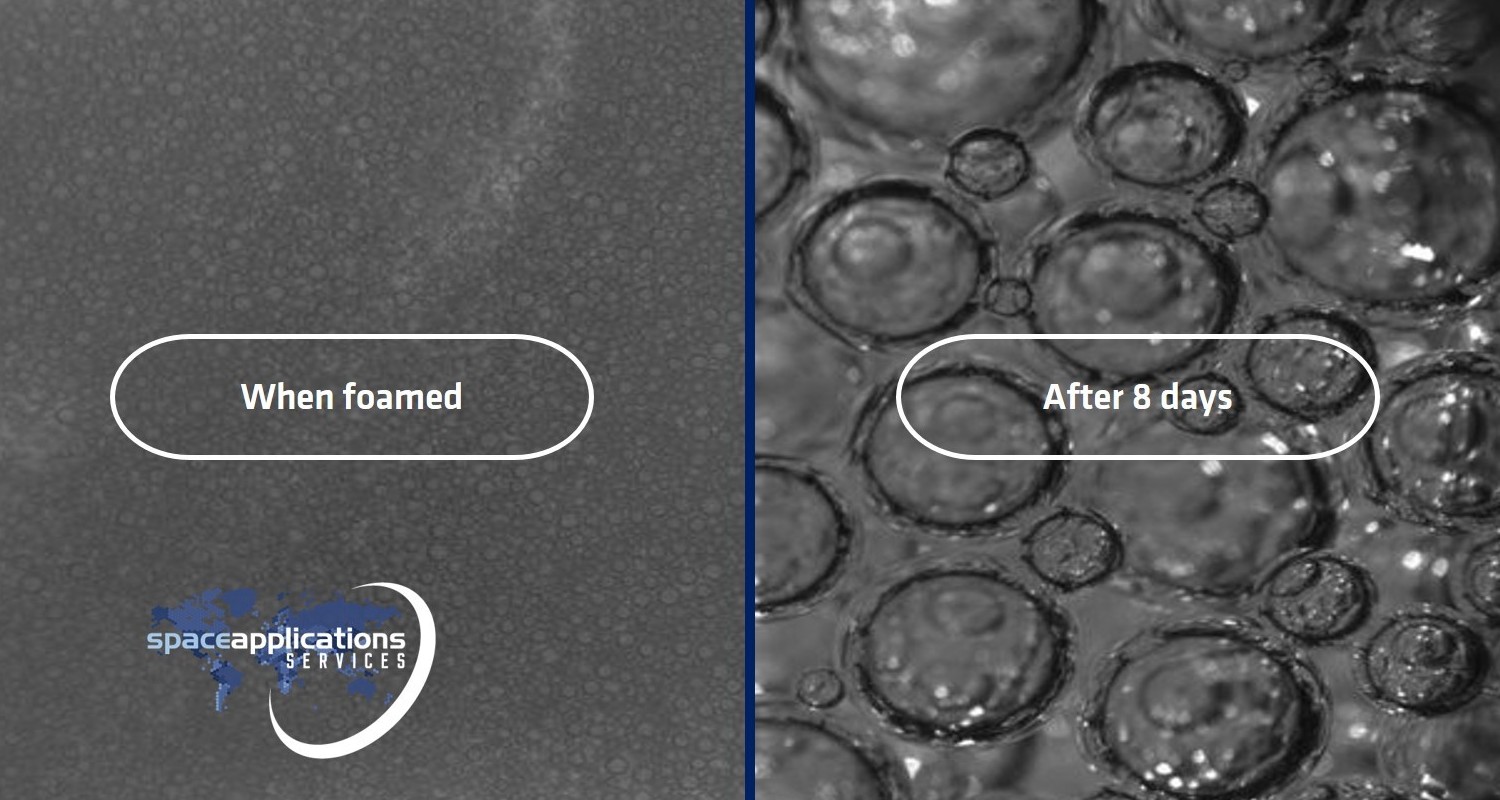Thomas Pesquet installs new sample cells for the Belgian space control centre to further study foam in microgravity.
-
On June 11, Thomas Pesquet, the European Space Agency astronaut of French nationality, will be installing new sample cells for the Belgian space control centre (B.USOC, Belgian User Support and Operations Centre) operated by Space Applications Services operators.
He will replace sample cells within the Fluid Science Laboratory onboard the International Space Station (ISS). The operators will support Thomas during his activity from the control center. This activity marks both the end of the four-month experiment “Compacted Granulars 2” and the start of the seven-month experiment “FOAM Coarsening 2”. Once the activity completed, the operator will turn on the experiment container and initiate the monitoring and control of the foaming experiment.
The Centre is responsible for the Fluid Science Laboratory facility inside the European Columbus module, as well as the experiments carried out in it. Since mid-2018, the operators of B.USOC and Space Applications Services completed successfully five scientific experiments: CompGran, RUBI, FOAM-C, RUBI-X, and CompGran-2. Each experiment had a duration of 3 to 7 months.
The FOAM-C experiment studies the aging of foam that is stirred by a magnetic piston to form fine bubbles. Using several cameras inside the experiment container, images are taken of the foam and streamed to the ground for analysis. Last year, the first mission was very successful and some of the analysed data provided the scientists with unexpected results and more questions.
The upcoming succeeding FOAM-C mission will study new sample compositions and define new scenarios that will provide answers to these questions. In order to maximise science results, multiple foams will be studied in parallel. To do so, operators have redefined the original operational concept within a short timeframe.
